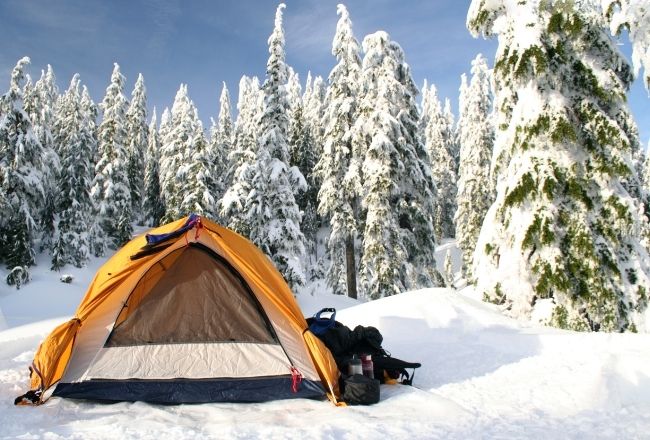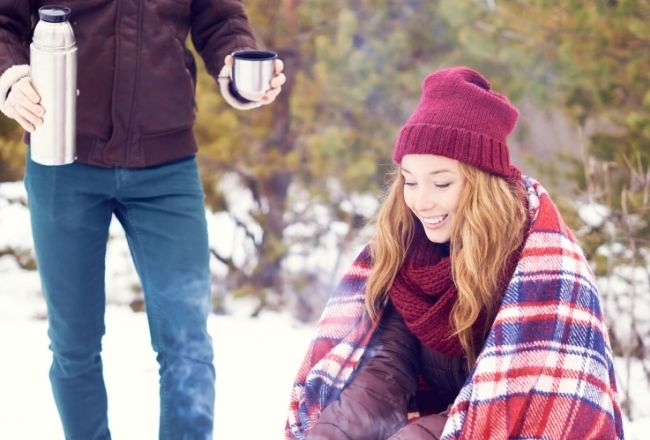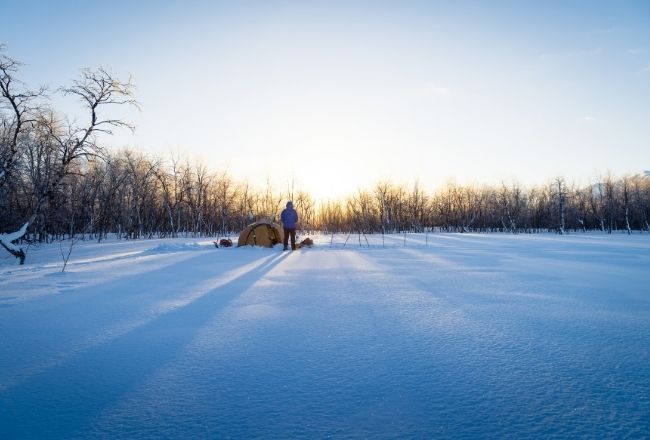Christian Camps Indianapolis is a wonderful place to spend days with your children. This camp has been running for years, and it continues to be a popular choice among families in the Midwest. Walnut Ridge Retreat Center offers programs from pre-school through high school, so there is something for everyone. The camps provide excellent opportunities for kids to get outside, have fun, and make friends while developing their faith in Jesus Christ. They also offer many different activities, including archery, rock climbing, horseback riding, arts and crafts projects, theater productions, and much more!
Camping trip in winter- things to consider
Snow-capped mountains and a clear sky filled with stars or the smell of pine in a tranquil alpine lake are both unforgettable. It won’t matter how spectacular the view is if you spend the night in the cold or freezing. Skiing and snowshoeing can be challenging. Winters in the sub-zero range can be hard. Make sure you have the right gear to stay warm. Discover best tips by Indiana Christian camps on how to make your next adventure more comfortable so that you can spend less time fighting the cold.

1. Be sure to check the weather and the risks
Before you leave, you should know. Check the weather conditions before engaging in any outdoor activity. Make sure you are up-to-date on approaching weather topics and seasonal trends. Contact your local ranger station for more information. Be sure to update all parties to your travel plans so they know when and where you will be traveling.
2. Prepare your campsite by securing it and flattening your sleeping area
Tents should be pitched in a reasonably dry area, level, and protected from the weather. Using your tools or your boots, remove snow from the site so the soil can be exposed. As you prepare the ground where you will sleep, use your knees to level the surface. A snowdrift can be hard to handle once it’s melted and frozen again.
What causes your body to lose heat?
- Evaporation: Cooling effects are caused by evaporation. Sweat is responsible for losing 85% of the body’s heat during intense exercise. Increased breathing and perspiration-soaked clothing also cause body heat to be lost.
- Radiation: Radiation reduces the body’s temperature. Below 20° C (68° F), the body’s heat can be lost by more than 50% through radiation.
3. Make sure you have an insulated closed-cell foam mattress
Sleeping on a cold floor leads to heat loss due to conduction, and even a “warm” sleeping bag Will be cold in freezy weather if not accompanied by a good insulation pad. Typically, self-inflating air mattresses only provide heat insulation up to 30 degrees Fahrenheit. To make sure your mattress is comfortable, place a cushion made from closed-cell foam (or CCF) first. We’re talking minus 19 ° C for this aluminized and coated cushion, and its R-3.5 rating will keep you warm. Simply roll out your self-inflating mattress, and you’ll be fine. A few backcountry experts even suggest that you layer your air mattress with the CCF cushion. Take into account the weight, compression, and comfort of the mattress when making your purchase.
4. Warm-up with a hot water bottle.
Stainless steel hot water bottles that are not insulated will radiate heat as if they were sauna stones when you put them in your sleeping bag at night. Place your improvised water heater at one of these vital locations: the heart, or neck (near the jugular)
Stainless steel, not your thing? Look for BPA-free materials. When a material is heated, it can leach harmful chemicals into the water. That’s why stainless steel bottles should be used. . A word of caution: Make sure you read the label carefully when you buy metal water bottles. A stainless steel bottle should have a food-grade 304 or 18/8 number.

5. Ensure that your boot liners are stored in your bag
Shoving your feet into frozen boots hurts worse than anything else. Warm your hands and feet to save energy. Your body prioritizes heat production while moving and recovering from exercise. If you want to reduce moisture and manage odor, use wool socks or a synthetic blend. Be sure to wear gloves, too!
6. If you are going to sleep in cold weather, wear the right clothing.
Some say that sleeping naked inside a sleeping bag keeps you warm. That’s just not true. Make sure you wear the appropriate base layers at temperatures below 30 ° F:
When camping, why are cotton clothes not recommended? The experts at Christian Camps Cincinnati say cotton is harmful, but why exactly?
Clothes made of cotton absorb moisture, reduce body temperature, and are supportive of bacteria. Moreover, Cotton soaks up moisture easily like a sponge, while moisture-wicking materials such as wool, polyester, and polypropylene do so by capillary action. To stay warm, you should wear synthetic fabrics instead of cotton. Try to wear layers of synthetic fabrics to stay warm.
7. What to do when camping in the wind
Winds blowing strongly? Try sleeping in shifts. According to a cold-weather expert at Christian Camps Indianapolis, tents must be checked every few hours. If you wait that long to tie a rope, the damage to the structure will be irreversible. Consider this: the less wind, chilly air, and gusty surface there is against your setup, the safer. If you want to camp in areas where the wind is unexpected, choose a tent with the highest wind index. Utilize the stable wind direction: Point your tent’s narrowest side toward the wind so that less surface area is exposed to the wind.
If there is a concern about gusts, bring grooved, wind-resistant stakes. Tents that are no longer functional can cause financial losses and be risky for your safety.

8. Grab a midnight snack that contains lots of calories
If you want your body to run efficiently, fill it up. Consume fats, carbohydrates, and sugars. Your meal should be eaten closer to bedtime, especially if it includes high levels of fat. Proteins are metabolized faster than fats, and carbohydrates are metabolized slower than fats. Choose high-calorie foods like chocolate, nuts, and cheese. You can give an extra boost to your body just before you sleep by eating a hot, minimally-prepared meal.
9. Keep dry equipment free of spills – Take advantage of reusable straws
Liquid spilling on dry gear would be the most frustrating thing that could happen. Keeping a reusable straw close to your water bottle is essential during the night for easy hydration. Stainless steel is both strong and easy to clean, so choose a corrosion-resistant material. Spices are often carried in straws by hikers to make their food taste better. It’s as simple as packing the spice into the straw, sealing the ends, and that’s it! In no time at all, you can prepare gourmet meals. Please make sure you remove your cayenne pepper from the straw before you attempt to drink from it).
10. Make sure your tent is free of morning frost
A tent’s inner wall can easily collect water vapor even if the door is cracked. Melting ice penetrates your gear. Control freezing by keeping your gear covered or inside garbage bags and swept the ice crystals in piles to collect before they melt (with a tent brush). If possible, dry your gear every day during cold weather. Let the sun or dry wind dry your tent if you are out all day.
11. If you have to pee, don’t hold it back
When nature calls at night, don’t put it off; doing so, in the long run, could make you colder as your body burns calories to keep urine warm. Does it feel too cold to flush? A designated pee bottle may be appropriate for boys (marked with tape or a distinctive feature).
The best pee funnels for women can make life less cold for modern women. Check out our recommended list for the best emergency equipment for women. Feeling thrifty? Try a wide-mouth jar.
You may need to take drastic measures during tough times, and your pee pot (and body) can provide passive warmth. Tighten the lid tightly and be aware of leaks. Also, the jars can be used as waste carriers or to package feminine hygiene products.
12. Keep your water bottles insulated
Dehydration is more common at high altitudes and during extreme weather conditions. Frozen water not only lowers the body temperature but also makes rehydration difficult. Ninety-five percent of radiant heat is reflected by these insulators, which also insulate hot drinks and soup. To remain hydrated, sip something warm throughout the day.
13. Avoid exposing your electronic devices to the cold
Batteries can quickly drain or even damage electronics when it is cold. You should store anything that you don’t want to freeze – electronics, batteries, fuel cans, etc. – at the foot of your sleeping bag. Get a slightly longer sleeping bag to do so. Before you go out in nature, you should make sure you check your electronics’ storage and operating temperatures. In the event of improper operation or charging of an electronic device, irreparable damage may occur.
Bonus Tip by heads at Indiana Christian camps: Encouragements to boost your confidence
Camping in the cold weather backcountry is just what you need. You look up at the trees through your window and imagine the pines and the high altitude as you are surprised by the sight of a spooky peak. You appreciate the sound of a gentle snowfall on a silent night and spend time watching rainbow trout leap in the twilight. Adventure satisfies your soul. Be smart, play it safe, and trust your instincts wherever you go.
Conclusions: Our counselors and staff at Walnut Ridge Retreat Center are committed to helping you grow in your relationship with Christ. We offer a variety of Bible-based programs, camps, retreats, and more for youth and adults alike. If you’re looking for an opportunity to invest in the lives of others, please contact us today!
